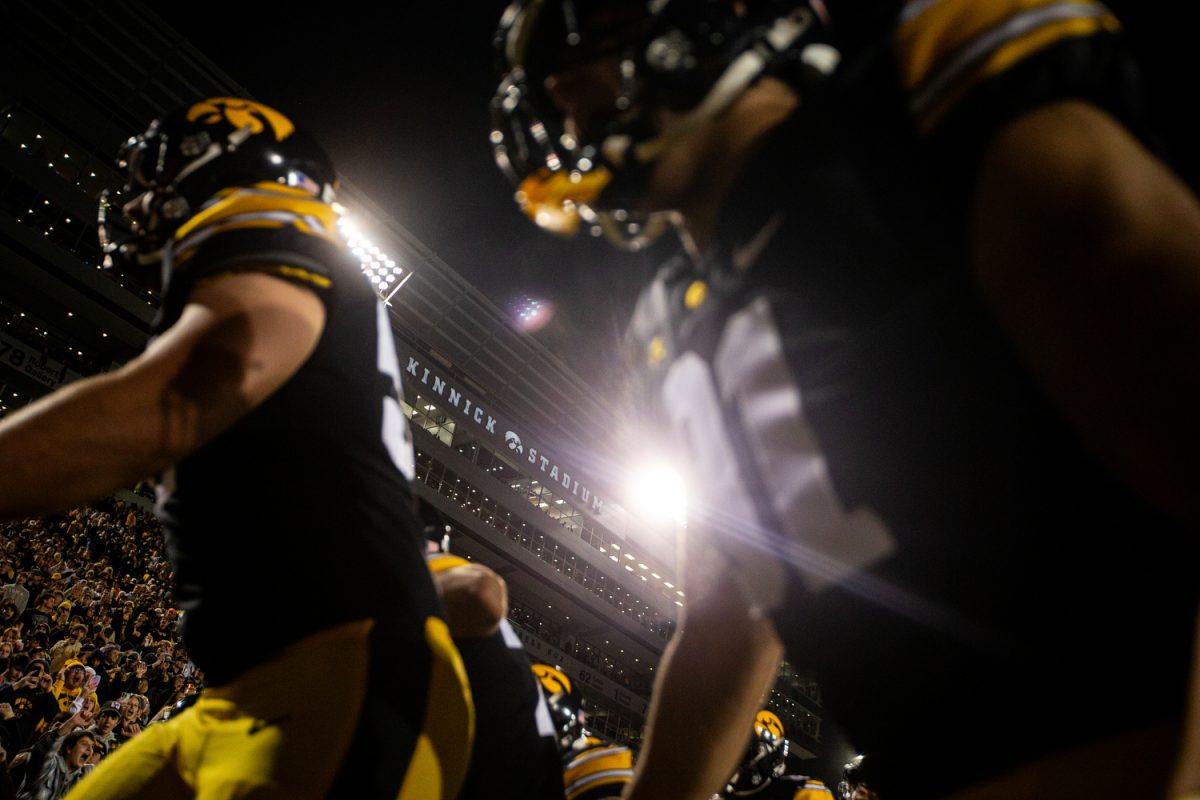Absolutely not
While I think NIL certainly has some positives, it has completely destroyed the sport we all love. College football should be considered a step to the NFL, yet the NCAA is trying to turn it into its own professional sport.
NIL, which stands for name, image, and likeness, essentially allows college athletes to be compensated for the personal brands they develop while competing at a university.
Old-school head coaches such as Kirk Ferentz and Nick Saban not only built their programs around winning — they also developed their players into great role models off the field.
Now, the only concern of every high school recruit is how much money they will make at a certain school rather than committing to the coach and the program itself.
Following his retirement in January, Saban summed up the current state of college football in an interview with ESPN.
“Maybe 70 or 80 percent of the players you talk to, all they want to know is two things: ‘What assurances do I have that I’m going to play’ because they’re thinking about transferring, and ‘How much are you going to pay me?’” Saban said.
The negative effects of NIL have even harmed the Iowa football program.
On March 19, offensive lineman Kadyn Proctor announced his intention to transfer out of the Iowa program.
The announcement came only months after he made the leap from Alabama shortly after Saban’s retirement.
It marked the second time Proctor decommitted from the Hawkeyes. Ahead of his junior year of high school, Proctor made a verbal commitment to Iowa but later changed his mind and went to Alabama after reportedly being offered over a million dollars in NIL cash.
There is no reason colleges should be allowed to throw millions of dollars at an athlete that might not even stay with their program for more than one season.
It also creates a massive competitive disadvantage for schools that don’t have as much funding such as Iowa or Purdue.
Money is now the driving force of college athletics, whether we like it or not. It’s all pay for play these days.
If you are affiliated with the NCAA and somehow read this, please consider making changes with NIL.
It depends how you look at it
Before July 1, 2021, there was a ton of backlash from former and current collegiate athletes about not making any money despite profiting millions of dollars to the NCAA through their play. The controversy built up enough to where the NCAA passed a rule that allowed players to make money through their name, image, and likeness, also known as NIL.
We now have collegiate athletes making up to millions of dollars — USC basketball guard Bronny James leads all athletes with an estimated $4.9 million in NIL earnings, according to On3 Sports — which allows athletes to continue college and get their degrees without stressing over finances.
However, Brad did list some examples on how NIL is destroying collegiate sports across the board. Making money is necessary for any human being to make ends meet, and it’s now become a bigger factor in athletes’ future plans. It has led to a record-high number in transfers and multiple legendary coaches resigning due to the matter.
However, there have been some players who put their NIL money to good use.
In October 2023, Arch Manning — Texas backup quarterback and nephew of football Hall of Famers Peyton and Eli Manning — made nearly $2 million in NIL, according to Business Insider, and donated the earnings from an auctioned Manning card to the Ronald McDonald House Charities. But it wasn’t just any ordinary donation as the card sold for a whopping $102,500.
Another household college football name during the 2023 season was Michigan running back Blake Corum. With around roughly $854,400 in NIL earnings, according to On3 Sports, Corum bought over 600 turkeys and gave them away in Ypsilanti, Michigan, around Thanksgiving last year, for the third year in a row.
There are more examples of college football players using their NIL money for good use, but we can’t deny the truth of money changing the way teams recruit and keep their players. Many schools will be outbid by these prestigious, established programs and will eventually lose their star players.
All in all, everything comes with its fair share of positives and negatives, and that’s certainly the case with NIL.



